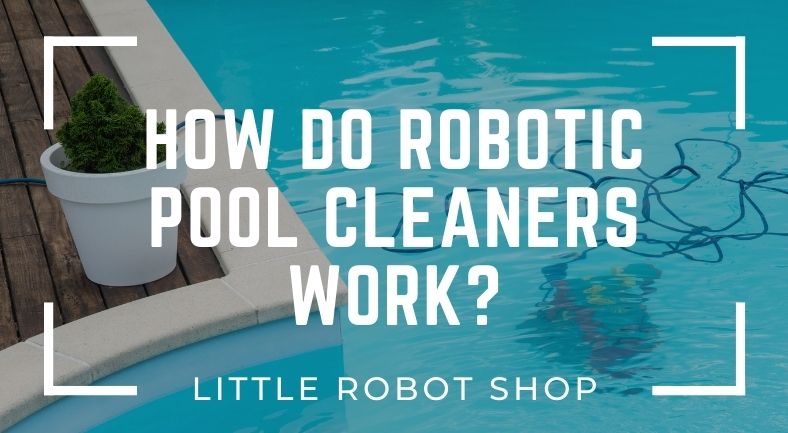A robotic pool cleaner is an amazing tool for keeping a clean pool at all times. They are designed to scrub swimming pools with very little human supervision. They will systematically collect debris, such as leaves and twigs, and sediment from swimming pools while brushing technology to scrub the sides and edges of your pool, sometimes including walls and steps.
But how do robotic pool cleaners work? To help you in your mission, deciding on the best robotic pool cleaner for your home.
You may also like:
- Aquabot X2 Review
- Dolphin Quantum VS Triton PS Plus
- Best Robotic Pool Cleaner For Leaves
- Paxcess Wall Climbing Cordless Robotic Pool Cleaner Review
How do these automatic pool cleaners work?
Robotic pool cleaners are driven by an electric motor that comes with its own pump and filters to collect debris from the pool. When placed into the pool and turned on, the tracks will drive it around the floor of your pool while rotating brushes dislodge algae and stubborn dirt. As the debris is disturbed, the vacuum sucks it into the robotic cleaner where the filter will ensure that clean water is circulated back into the pool.
Most of these types of devices include some form of smart navigation technology. What this means is over time, the robot will learn the shape of your pool and the most efficient cleaning route. The smartest ones will also learn dirt “hotspots” and know which areas of your pool require a bit of extra scrubbing.
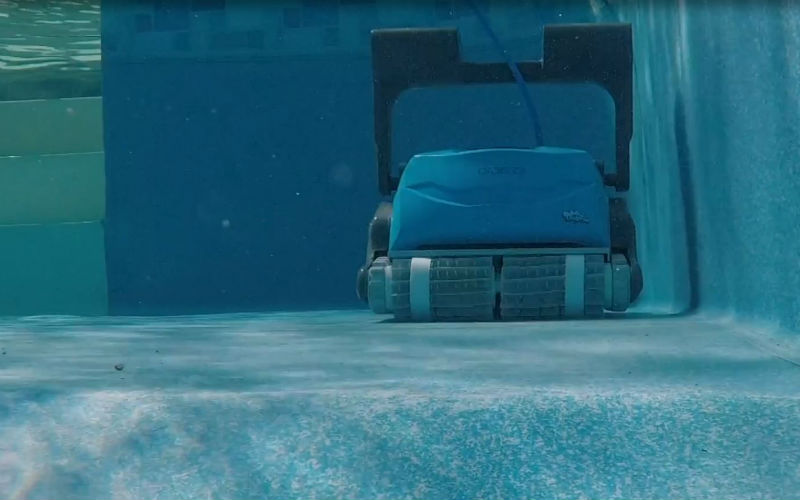
Of course, as with anything, the more you spend, the better it will be. The premium models will come with apps and wifi control meaning if you need to do some spot cleaning, it is a cinch.
There are two major types of robot cleaners that a pool owner should consider; the above-ground and in-ground. The major difference between them is that most in-ground pool robots are designed to climb pool walls and steeper slopes while the above-ground pool robot isn’t capable of performing such functions.
Although it is possible to use an above ground robotic pool cleaner with an in-ground pool, it’s not usually recommended the other way round, so be sure to check the compatibility with your pool before making a final choice.
Robotic pool cleaners will come with a charger that you plug into your regular household power outlet.
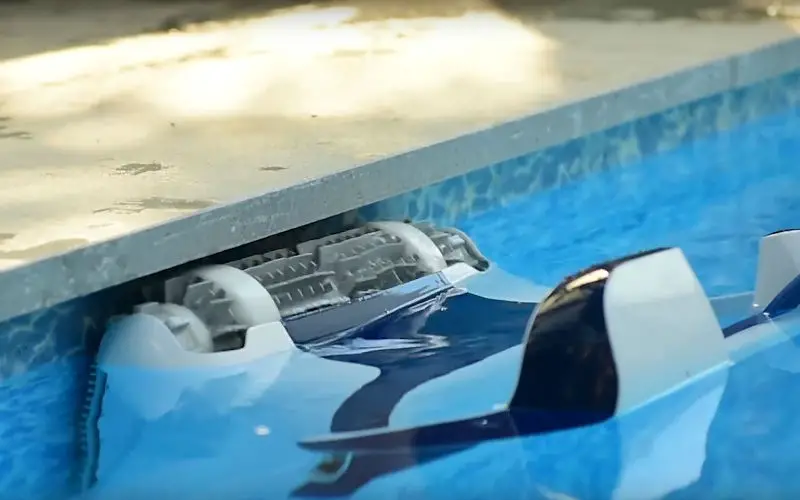
What is quite important to know is that while the cleaning part is automated, you will still need to put your pool cleaner into your pool and remove it when it is done. It is recommended by pretty much all manufacturers to remove and clean the filter baskets of your robot pool cleaner after each cycle.
While the weight on the machine may not seem too important, bear in mind if you have to pull it out of your pool while full of water, it can be quite a challenge.
How do pool robots differ from other automatic pool cleaners?
The major difference between robot pool cleaners vs suction and other automatic pool cleaners, is that the pool robot is a smart machine and uses artificial intelligence. The pool robot has electronic sensors and processing abilities that the other automated devices lack.
Most pool robots will scan the pool and determine the most efficient way to clean the pool in the least amount of time. Some advanced models will have memory systems and will constantly update their data to improve their capabilities each time they work.
Automatic suction and pressure cleaners do not have this feature and clean in a very random pattern. This can lead to dirty spots and inefficient cleaning.
Suction side cleaners are also required to run off your current pool pump using your pool filter which can add wear and risk of failure. Robotic cleaners are completely independent of any other system in your pool, which is why they can be a better choice over a device like a pressure-side cleaner.

Key features an ideal pool cleaner should have
So we answered how these particular devices function, now let’s take a closer look at some of the key features that the top robotic cleaners should have.
Short cleaning time
An efficient robotic pool cleaner should do its job quickly so your pool can be swim-ready when you want it. That’s why you should look for an automated pool cleaner with a short cleaning cycle; your device shouldn’t take more than 3 or 4 hours for a complete clean.
Smart navigation system
A smart navigation system improves the efficiency of an automatic pool cleaner. Bluetooth, sensors, and gyroscopes allow a pool cleaning machine to move in a logical, time-saving way.
Powerful brush system
A pool cleaner with a powerful brush system will not only collect debris but will remove stubborn grime from the floor and walls of your pool.
Automatic scheduling
Some pool robots come with timers so you can set your robotic cleaner to run on its own without supervision. You can also set the timer to start a cleaning cycle once a day, two times or three times a week; this depends on the robot’s design.
Easy controls
The ideal robotic cleaners should have simple controls that are easy to operate. Some advanced pool cleaners come with a remote control or allow you to install an app on your smartphone to control it.
Filtration system
Some automated pool cleaners don’t have a filter but a filter system is important. Products that solely rely on a swimming pool’s filter may quickly damage it. Many robotic pool cleaners come with more than one type of filter, so they can tackle fine and coarse dirt and debris.
Replaceable parts
After a few years of cleaning your pool, your robot will need some parts to be replaced. Parts such as brushes, filters, bags and power cords are some of the items that take on heavy wear and tear and they should be easy to replace.
Tangle-free power cord
Robotic cleaners come with power cords. This cord should be long enough for your pool and it should have swiveling ability to prevent tangling.
Handle
This may seem such a silly little thing, but when you are trying to remove a robot from your swimming pool that is already quite heavy when you also consider it is full of water, it can quite easily be 30lbs or more. At that point, you will really be happy you have a robotic pool cleaner with a handle.
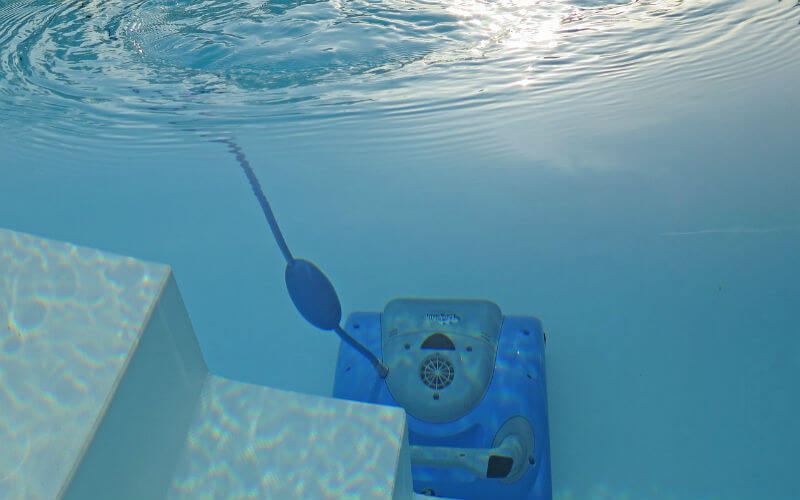
How much do robotic pool cleaners cost?
Automatic pool cleaners can range in prices from $100 to over $1000. Here is a really rough idea of what you can expect from the price range.
Under $500 — budget model
Within this price range, you can get some automated pool cleaners like the suction side pool cleaners, pressure-side pool cleaners and some basic robotic pool cleaners for above ground pools.
A pool system for this price will be unlikely to have much smart technology, more reliant on random cleaning patterns. Also unlikely to reach the top of your pool walls and scrub the waterline. They may also have a lower quality pool circulation system, which isn’t ideal for cleaning on any pool surfaces. While not overly advanced, a suction side or pressure-side cleaner can be a great budget option.
Some examples would be the Aquabot Jr or the Dolphin E10; both mentioned in this post about the best pool cleaners for above ground pools.
Between $500 to $1000 — mid-range model
For this price range, you can start to get some smart robotic pool cleaners with some pretty decent features for both above and in-ground pools.
Scheduling will be available at the higher end of the price bracket and you can certainly expect good performance from a solid machine, that with proper maintenance, you can rely on day in day out. It will likely be able to clean the walls, but maybe not be super effective on the waterline or steps.
Some great examples at the lower end of this price range are the Paxcess Pool Cleaner and the Dolphin Nautilus, featured here; The Best Robotic Pool Cleaners for the Money.
At the top end of this price range, you’ll get smarter robots such as the Dolphin Triton PS with Smartphone integration and the Aquabot Elite Pro.
Above $1000 — premium model
The most sophisticated devices cost more than $1000. Pool cleaners in this price bracket will be for larger pools and include many smart features. The pool mapping software will be first-class and there will be wifi connectivity and cleaning reports. At this price level, you should certainly check that there is a tangle-free cord as it will be working very much unsupervised, so tangling is the last thing you need.
Some of my favorite models are the Dolphin Sigma and Premier, also one of the best in class, at the moment, the Dolphin Nautilus Supreme.

How should a swimming pool owner maintain their cleaner?
Routine cleaning and maintenance is the only way to make sure your pool robot will last long but this isn’t difficult. With these simple tips, you can maintain your little helper.
- After every cleaning cycle makes sure you remove your pool vacuum from the pool, remove the filter bag or canister and wash it with a hose to dislodge any stuck dirt particles.
- Always check for wear and tear and quickly replace any worn out parts.
- Always check the brushes, drive tracks and filters after every cleaning.
- Replace worn brushes as soon as possible to maintain the proper cleaning power.
Limitations of pool vacuum cleaners
Despite all the benefits of robotic pools cleaners, selling the dream of completely autonomous pool maintenance is still not quite right. There are certainly some limitations you need to be aware of when it comes to automated pool cleaning.
- Pool cleaners need regular maintenance which costs some time and money.
- Robot pool cleaners come with an electric cord and if this isn’t long enough it can limit the robot’s mobility.
- Some pool cleaners aren’t able to gather large floating debris from the water.
- Pool cleaners that rely solely on a pool’s filter system to grab debris can clog and wear out the pool’s filter. To prevent this you will always need to clean your pool’s filter, which may be inconvenient.
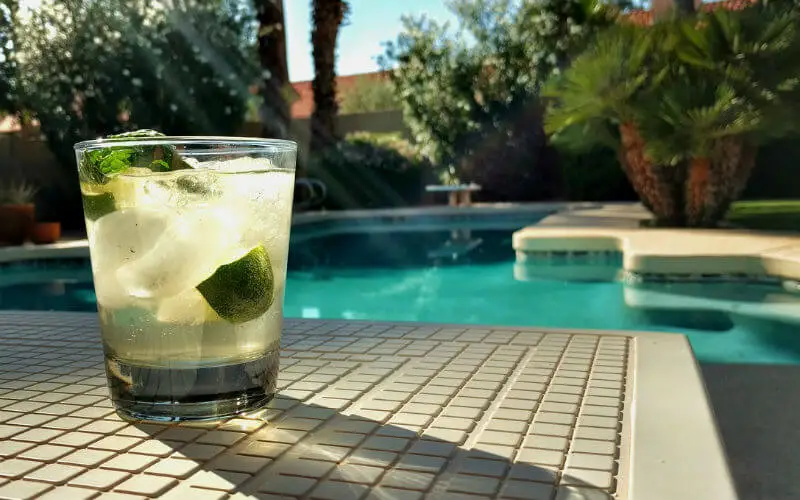
How Do Robotic Pool Cleaners Work – Final thoughts
Hopefully, you are now confident and understand a little more about what an automatic pool cleaner does and if it would be the right choice for you.
While it will certainly help you keep your pool clean, it will not completely remove the need for human effort.
I think one of the biggest positives is consistency. For example, if you have a pool cleaning company that comes around every Wednesday, if you fancy a swim on a Tuesday, there is a good chance the water in your pool is already starting to turn a bit gunky. If you have an automatic pool cleaner looking after the pool on a regular basis, this won’t be the case, your pool water will be clean and ready to jump into every day.
While it is certainly a large investment, I think you would find almost any pool owner who has taken the plunge and bought one, are happy with their investments.

Matt is the founder of the Little Robot Shop, who has spent much of the last decade hacking home cleaning with various robots and devices to make keeping his home clean as easy as possible. Not an easy task with two young children.
When not working on the Little Robot Shop website or YouTube channel, he works as technical support and product specialist for a fast-growing digital company. He does his best to get his younglings to code, which will be an essential skill in the future.
